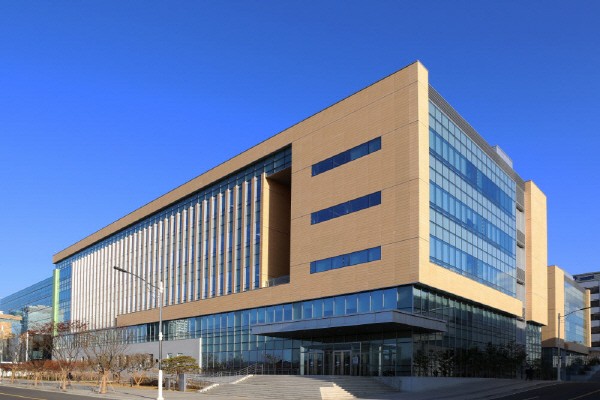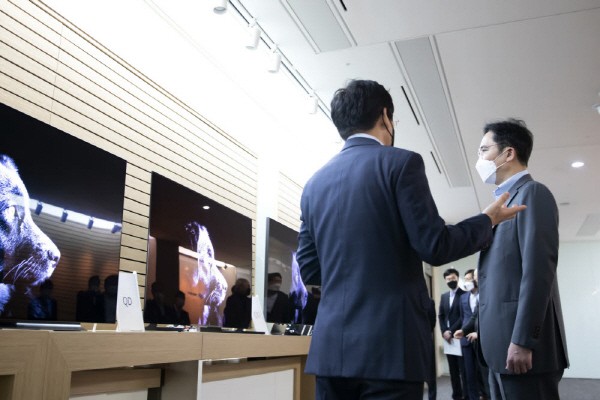“First is technology, second is technology, and the third is also technology.” This is a phrase that Jaeyong Lee, chairman of Samsung Electronics, said on his way back to Korea from a 12-day business trip in Europ in June. Chairman Lee has met with Hungarian battery plants, European auto manufacturers, and global equipment companies in Europe. He has decided that Samsung's future direction with one keyword: ‘technology,’ after meeting with key customers.
Batteries and displays are fields where 'technology' differentiates competitiveness just as much as semiconductors field. They are also the fastest and most intense field in China's pursuit. Being focused on securing profitability, Samsung’s battery and display business need changes. Chinese companies and domestic competitors are expanding their investments significantly. Experts point out that even if Samsung may be ahead in profitability now; however it takes an instant to lose market leadership if Samsung gets pushed out of 'economies of scale' in the future.
Batteries are the future core product of Samsung, and considered as the 'second semiconductor’. Samsung took a rather conservative and cautious move while LG and SK investing in overseas production facilities heavily.
Samsung SDI achieved an operating profit margin of 10% in the battery business in the third quarter. This is the result of continuing its business strategy for profitability advantage. The operating profit margin of 10% is unusual in the battery industry. This margin is twice more than that of Chinese battery manufacturers such as CATL and LG Energy Solution. Samsung SDI was possible to achieve high profits due to its unrivaled technology and dominance as the world's No.1 small battery market. The demand for EV batteries also increased in the midst of this, which aided in recording an operating margin of more than 10%.
However, it is the right time to make a large-scale investment to compete in the future market. Next year, Samsung is known to expand its battery production capacity from 50 GWh to 60 GWh. The industry predicts that Samsung SDI will invest KRW 2 trillion, which is an increase from the previous year. The ‘KRW 2 trillion’ includes the investment in small batteries for IT devices; however it is still insufficient to cover EV batteries, which is a market that has a potential to grow significantly.

A researcher at Kyobo Securities, Boyoung Choi, said, “Samsung SDI is being evaluated fairly conservatively in investment in EV batteries compared to LG Energy Solution and SK On. It seems to be the time to invest for the future rather than focus on battery profitability.”
The problem is securing investment resources. LG Energy Solution and SK On were separated from LG Chem and SK Innovation, respectively, and started to secure financial resources through an initial public offering. On the contrary Samsung SDI is difficult to create a similar situation by having a company spin-off since it has a battery-oriented business structure. The large-scale investment plan at the group level was all-stopped due to Chairman Lee's 'judicial risk’. It is under the spotlight whether the inauguration of Chairman Lee will lead to Samsung's unique bold investment decisions and execution.

Samsung SDI urgently needs 'Plan B' to secure 'super gap’ in the display business as well. Samsung Display had good outcome this year with high profitability in the small and medium-sized sector despite the stagnant IT market and the negative growth of its rivals simultaneously. This was due to a significant increase of proportion of high value-added displays for Apple's iPhones. However, Samsung SDI’s sales structure focused on specific companies is considered an 'Achilles' heel’. Critics are point out that the company might have enjoyed a temporary boom this year due to competitor's production problems; however, Samsung SDI needs differentiated technology and investment in order to achieve mid- to long-term competitiveness.

Samsung Display revealed its plans to invest in 8th-generation OLED and microdisplay for IT. It is important to maintain a competitive edge through leading investments in the display market for IT OLED, virtual reality (VR), and augmented reality (AR) displays, which have potential to grow.
Critics are pointing out that investments should also be made in large displays that is experiencing negative records. Chairman Lee directly announced that he would invest a total of KRW 13.1 trillion by 2025 in the development of quantum dot (QD) displays in October 2019. However, the amount of investment execution has fallen short of expectations even after three years. Samsung has to keep the display gap through large-scale investment and expansion of R&D as China is rapidly catching up in the OLED market.
By Staff Reporters Jiwoong Kim and Sora Park (jw0316@etnews.com, srpark@etnews.com)